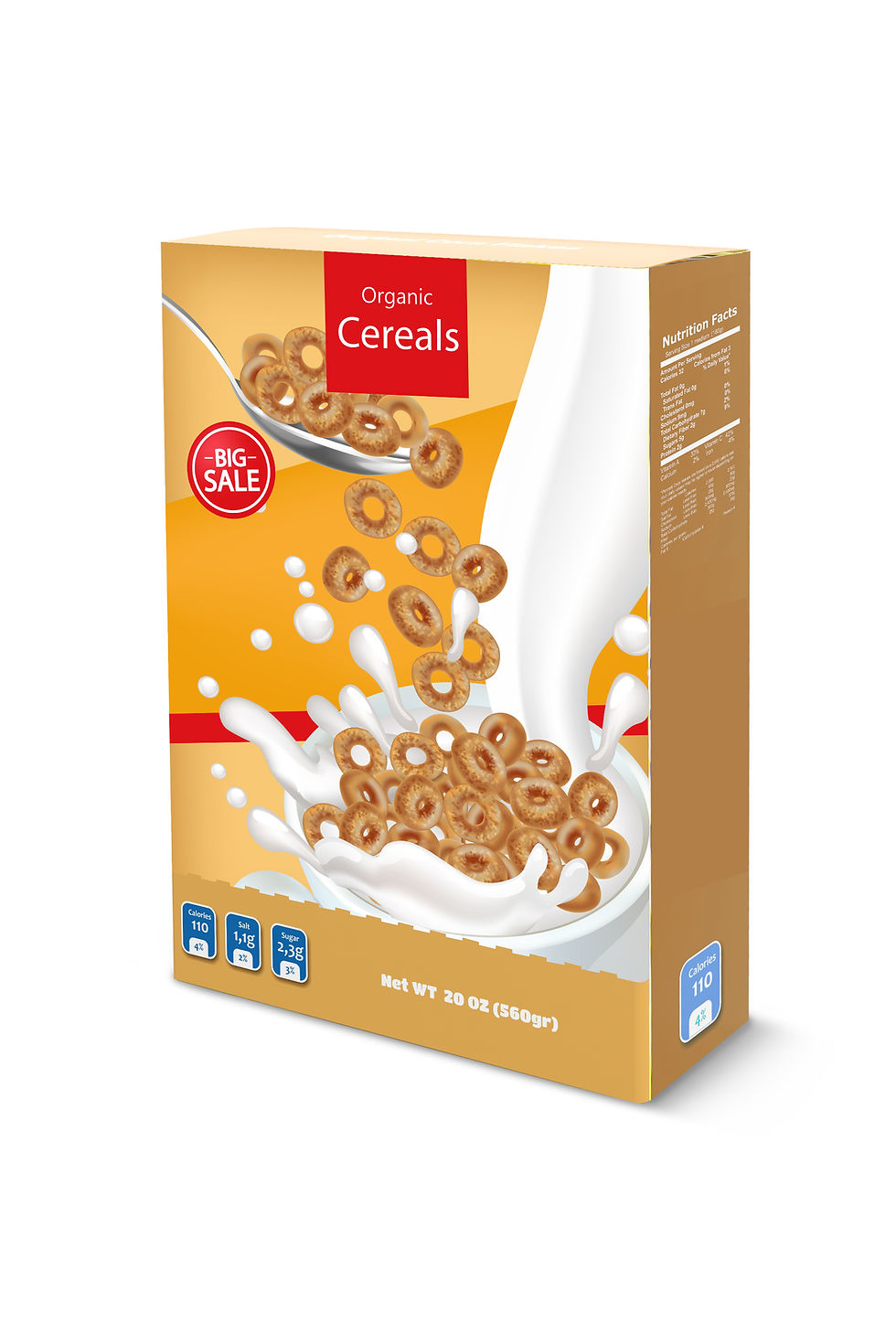Manufacturing Steps of Ready to Eat Cereals
- admin
- Jul 30, 2021
- 3 min read
Updated: Aug 3, 2021

Cereals make the breakfast 'fast'.
Ready-to-eat breakfast cereal is widely used due to its taste and easy preparation. There are varieties of cereals that we will stay away from, as well as more health-friendly ones on the market shelves. Of course, there is nothing wrong with demanding a delicious and practical breakfast alternative.
In this article, we will see both the industrial breakfast cereals production line and the industrial cereal recipe. We will also talk about developing a healthier recipe, which is an atmarbio recommendation. You will also find a variety of ready-to-use breakfast cereals in parentheses.
Happy reading!
(Ready-to-eat breakfast cereal types: flaked cereals; extruded flaked cereals; gun-puffed whole grains; extruded gun-puffed cereals; shredded whole grains; extruded shredded cereals; oven-puffed cereals; granola)
Production Flow Diagram of Cereals
How to make breakfast cereals step by step?

1.Acceptance of cereals into the factory
2. Preparation of cereals
3. Preparation of other ingredients
4. Mixing ingredients and grains
5. Pre-drying
6. Shaping
7. Baking in oven+Coating(if needed)
8. Packaging
Which cereals are used to produce breakfast cereals?
The base raw material in any breakfast cereal is grain. The most commonly used grains are corn, wheat, oats, rice, and barley.
Which ingredients are added to make breakfast cereal?
Most breakfast cereals contain other ingredients, such as salt, yeast, sweeteners, flavoring agents, coloring agents, vitamins, minerals, and preservatives.
What is the recipe for the ready-to-eat breakfast cereal mix?
A typical formula for corn flakes is as follows: corn grits, 45kg; granulated sugar, 3.7 kg; malt syrup, 1 kg; salt, 1 kg; and water sufficient to yield cooked grits with a moisture content of not more than 32% after allowing for steam condensate. Liquid sucrose at 67°Brix can be substituted for the sugar, with a decrease in the amount of water.
Likewise, it is possible to prepare breakfast cereals with the completely natural monk fruit sweetness offered on atmarbio.com. Thus, the calories of sugar are not added; at the same time, a suitable product is obtained for everyone who does not want to consume sugar. Monk fruit sweetness is used as much as the corresponding brix in the instructions for use table we give with the product. For more information please write on bio@atmar.bg
The cleaned and prepared whole grains are mixed with the other ingredients in a large rotating pressure cooker. The time, temperature, and speed of rotation vary with the type of grain being cooked.

The cooked grain is moved to a conveyor belt, which passes through a drying oven. Enough of the water remains in the cooked grain to result in a soft, solid mass that can be shaped as needed. The cooked grains are allowed to cool for several hours, stabilizing the moisture content of each grain. This process is known as tempering. The tempered grains are flattened between large metal rollers under tons of pressure. The resulting flakes are conveyed to ovens where they are tossed in a blast of very hot air to remove the remaining moisture and to toast them to a desirable color and flavor.

Cereals can be made in a wide variety of special shapes. After shaping, the cereal may be coated with vitamins, minerals, sweeteners, flavors such as fruit juices, food colors, or preservatives. The frosting is applied by spraying a thick, hot syrup of sugar on the cereal in a rotating drum. As it cools the syrup dries into a white layer of frosting.
The last step is the packaging. Prepared cereal flakes are packed with proper packaging materials.
(Resources:
In this article, some information and images are partly taken from the book “Breakfast Cereals and How They Are Made, Second Edition and the website of madehow.com)

Comments